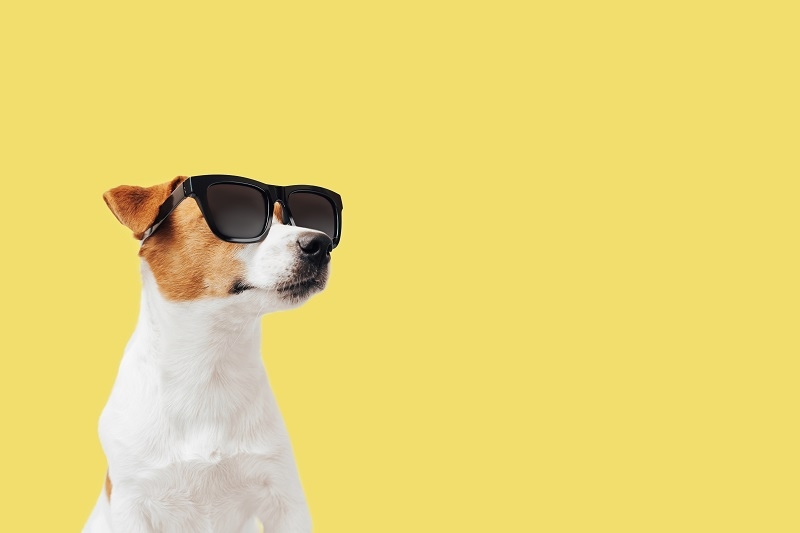
If you've ever tried to take your four-legged friend's picture, you'd realize that pet photography is no picnic. Whether you're taking pictures of dogs and cats, taking pet portraits at home, or experimenting with creative animal photography ideas, it takes lots of patience, experience, and timing to capture that one perfect shot.
Let's dive into some time-tested pet photography tips so that you can capture your pets like a pro - their adorableness, personality, and charisma in every photo.
The first grand rule of pet photography is to know your subject. Each pet is unique - some are camera-shy, and some are total divas who live for attention. Familiarize yourself with your pet before you even pick up your camera. Are they playful, curious, or laid-back?
When photographing dogs and cats, you’ll notice huge differences in temperament. Dogs tend to respond well to commands and can be coaxed into poses, while cats are independent and often move on their own terms. Your approach to photographing them should reflect these traits.
If your pet is active, book the session after a walk or playtime. For relaxed pets, book the session when they're alert but not wildly active. This is the observation that is the secret to your best home or outdoor pet portraits.
Lighting can make or break your photo. Shooting in natural light whenever possible is one of the best pet photography tips.
Understanding lighting for pets is key to achieving professional-quality photos without overwhelming your furry model.
Just like in human portraits, the eyes are the most expressive part of a pet’s face. When photographing dogs and cats, make sure their eyes are in sharp focus. You’ll instantly add depth and emotion to your photo.
Here's a universal problem - getting pets to pose. Pets, unlike people subjects, won't take orders (at least not always). So how do you get them to remain still, look into the camera, or assume an adorable pose?
Simple - toys and treats.
Stand in front of your lens with a treat to attract their attention. For dogs, employ a squeak toy; for cats, employ a dangling feather toy or dangling object. Not only will these distractions grab their attention, but they'll get natural excitement or curiosity facial expressions.
When photographing pets, make short, playful sessions. If your pet is tired or bored, stop and allow them to rest. Your best photos are made when your pet is calm and joyful.
Point of view is the key to animal photography. Taking the shot from above at all times will make your photos seem distant and not so interesting.
If you're shooting smaller animals like puppies or kittens, go lower or place them on something elevated (like a couch or chair) so it's easy to remain at their level.
Animals are adorable by default - you don't need a cluttered background diverting attention away from them. One of the simplest and effective pet photography tips is to keep things simple.
Static shots are wonderful, but some of the most iconic pet photography is brimming with life and movement. Everyone loves a jumping pet, so get your pet in mid-leap, running towards the camera, or chasing their favorite toy.
For action shots, speed up your shutter (1/500 sec or more) to capture motion. Engage burst mode to take multiple frames rapidly in succession - this raises your odds of capturing that perfect action photo.
These energetic pet photo concepts show the personality and energy of your pet that formal, stiff portraits simply can't. Timing is of the essence when taking pictures of cats and dogs. Have your camera at the ready, as pets don't repeat their best takes on command!
After you've mastered the basics, it's time to get creative. Play with angles - photograph from the back, paws portraits, or reflect your pet in a puddle or mirror. These innovative pet photo concepts set you apart from the ocean of boring, generic pet photos.

The most overlooked pet photography tip is patience. Pets do not understand that you are trying to create a masterpiece. They will walk, turn their heads, and at times just plain refuse to do as you ask.
Even fantastic photos require some post-processing. Use editing tools like Adobe Lightroom or Snapseed to tweak brightness, contrast, and color balance.
But don't overdo it - you're trying to enhance your pet's natural attractiveness, not replicate it.
Want to make your pictures more interesting? Experiment with themes and seasonal props. That is where your ideas for pet photography can spring to life.
Your pet's closest friend is probably you! Having owners or family members incorporated provides emotion and storytelling to the photos.
Every pet is different, and every shoot is a learning experience.
Practice, practice, practice - and the more you shoot, the more acute your eye becomes for timing, light, and composition.
If you plan to step up your pet photography tips, invest in a good DSLR or mirrorless camera with fast autofocus. Pets are erratic subjects, and continuous focus tracking lets you snap sharp photos even when they move.
A wide-aperture lens (like 50mm f/1.8 or 85mm f/1.4) performs the best for portraits because it lets you achieve that dreamy background blur. Nevertheless, with or without a smartphone, you can make great pet portraits indoors by using portrait mode and natural light.
Capturing pets isn’t just about photography - it’s about preserving the joy they bring into our lives. Whether you’re photographing dogs and cats, experimenting with animal photography ideas, or mastering lighting for pets, what truly matters is patience, love, and connection.
These pet photography pointers will transform ordinary photos into treasured keepsakes that reveal your pet's special personality. So grab your camera, get down on their level, and let the cuteness begin!
This content was created by AI